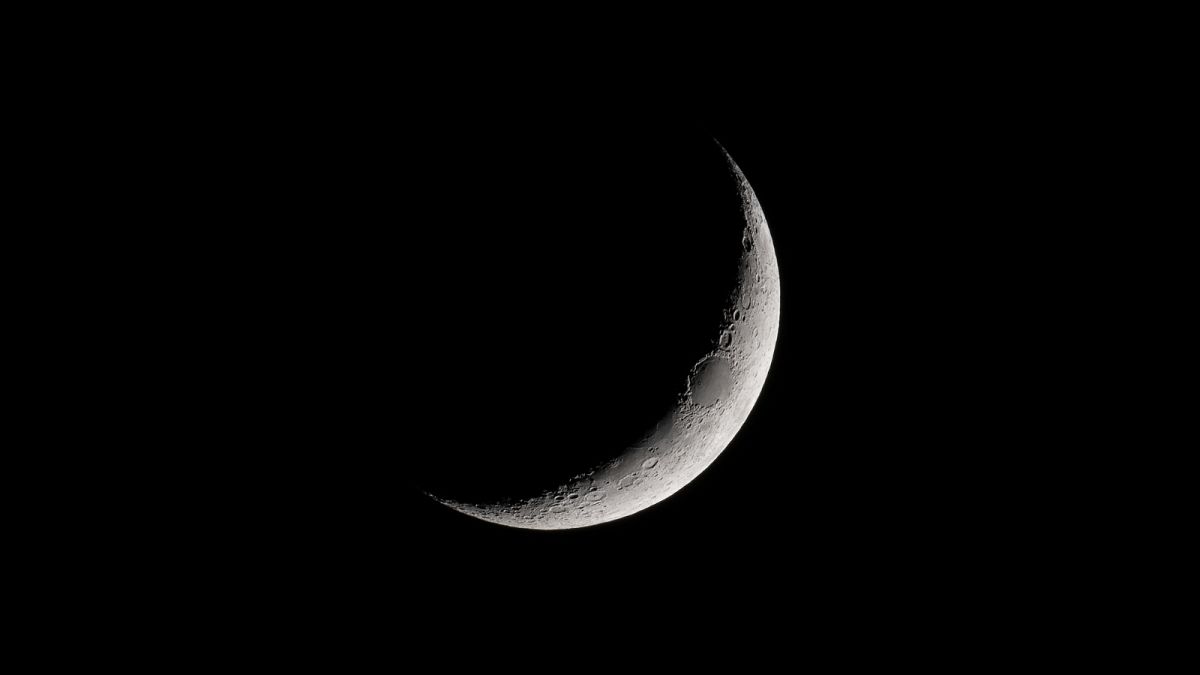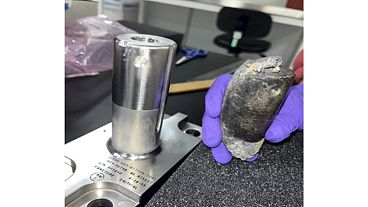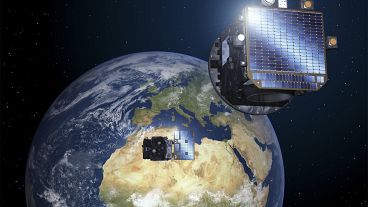So-called "moonquakes" occur as the Moon becomes smaller, jeopardising the likelihood of future manned missions and the creation of outposts.
A potential site earmarked for NASA's future manned mission to the Moon - an area thought to have water deposits that could sustain life - may not be as suitable for humans as first thought.
According to a new study, the area near the lunar south pole has been impacted by significant seismic activity, an effect of the Moon shrinking in size.
The region has become the focus of an international space race after India's historic Chandrayaan-3 lander successfully touched down there in August.
One of the main aims of the Indian mission is to locate a water source; scientists believe ice could be found in the huge craters in the south polar region which are permanently in shadow.
NASA has also selected an area in the region known as the de Gerlache Rim II as a candidate landing spot for its Artemis 3 mission, which is now slated for late 2026 at the earliest.
Threat of 'moonquakes'
Using data from NASA's Lunar Reconnaissance Orbiter (LRO), which was launched in 2009 to map the Moon’s surface, the study’s authors were able to show that the area near the proposed landing site was impacted by one of the strongest seismic events recorded by seismometers left behind by previous Apollo astronauts more than half a century ago.
The findings were published last month in the Planetary Science Journal.
Experts believe these seismic tremors - known as "moonquakes" - could pose potential threats to personnel on future manned missions or living in new settlements by causing landslides or opening up new faultlines.
"Our modeling suggests that shallow moonquakes capable of producing strong ground shaking in the south polar region are possible from slip events on existing faults or the formation of new thrust faults," Thomas R Watters, a senior scientist emeritus in the National Air and Space Museum’s Center for Earth and Planetary Studies and the lead author of the study, said in a statement.
"The global distribution of young thrust faults, their potential to be active, and the potential to form new thrust faults from ongoing global contraction should be considered when planning the location and stability of permanent outposts on the Moon," Watters added.
Why is the Moon shrinking?
The Moon's interior is still hot and molten at its core which makes Earth’s satellite prone to seismic activity. As it cools, the Moon contracts and becomes smaller in size.
The celestial body has decreased in circumference by around 50 m over the last hundreds of millions of years, in part due to the exertion of tidal forces from Earth.
The Moon’s cooling causes faultlines, or "thrust faults," to appear on the Moon’s brittle surface, which in turn cause moonquakes.
Thrust faults occur when a section of older crust pushes up over the top of its younger neighbour causing a "scarp," or a small cliff-like step, to form on the lunar landscape.
"Our analysis gives the first evidence that these faults are still active and likely producing moonquakes today as the Moon continues to gradually cool and shrink," Watters wrote in a 2019 study published in the Nature Geoscience journal.
He added that "some of these quakes can be fairly strong, around five on the Richter scale".
The 2019 study used analytical modelling and data from the Apollo seismometers to pinpoint the epicentres of eight moonquakes to conclude that the Moon was tectonically active.



